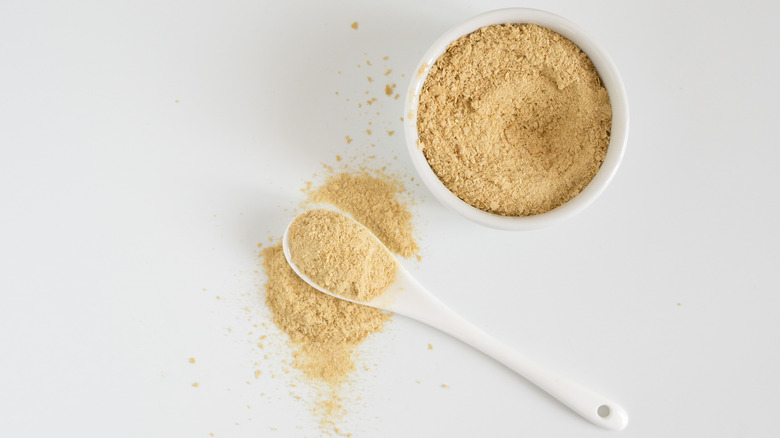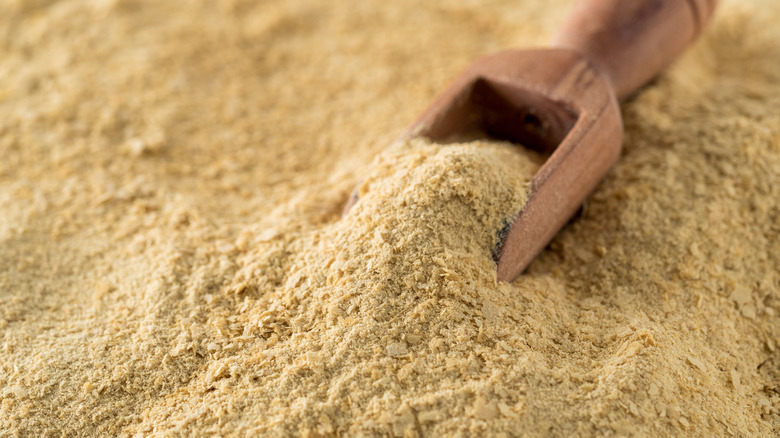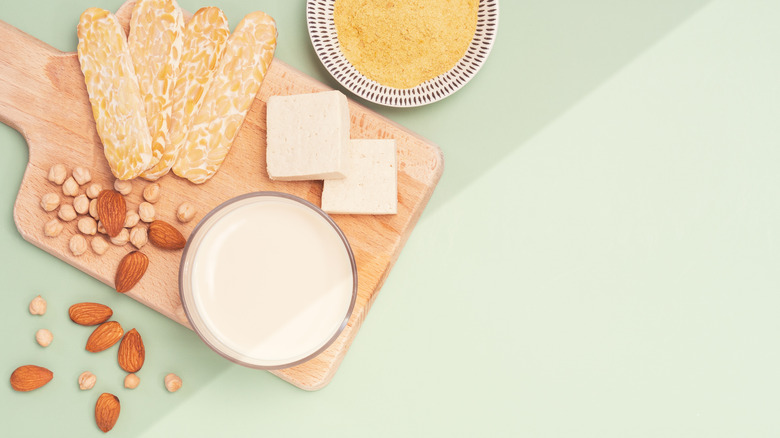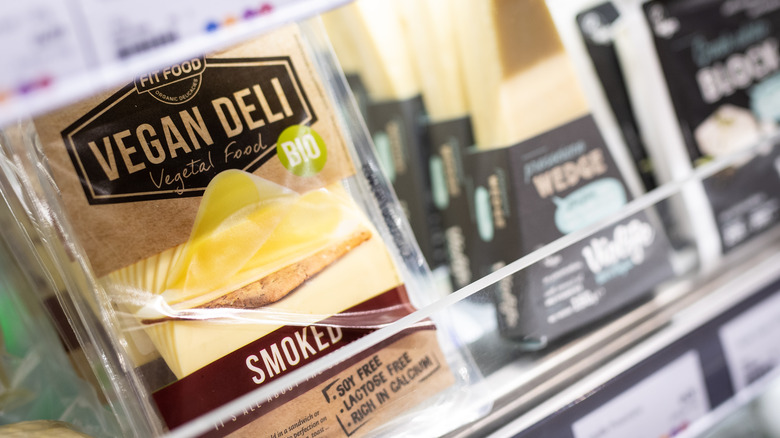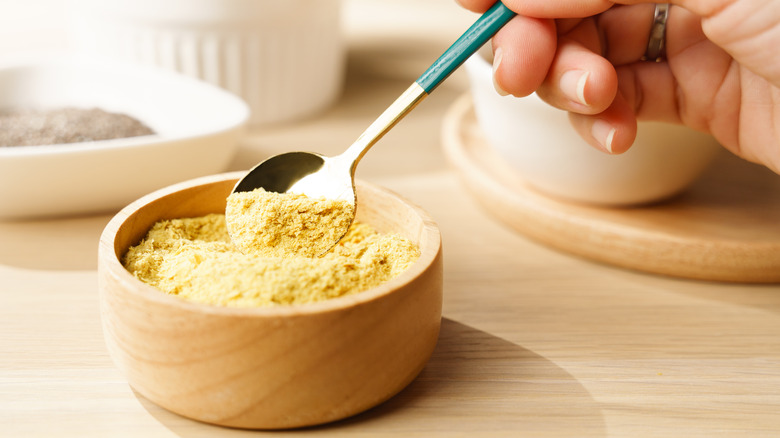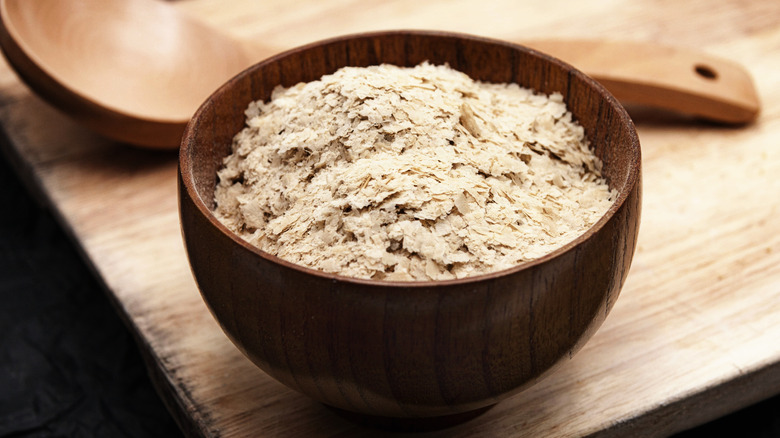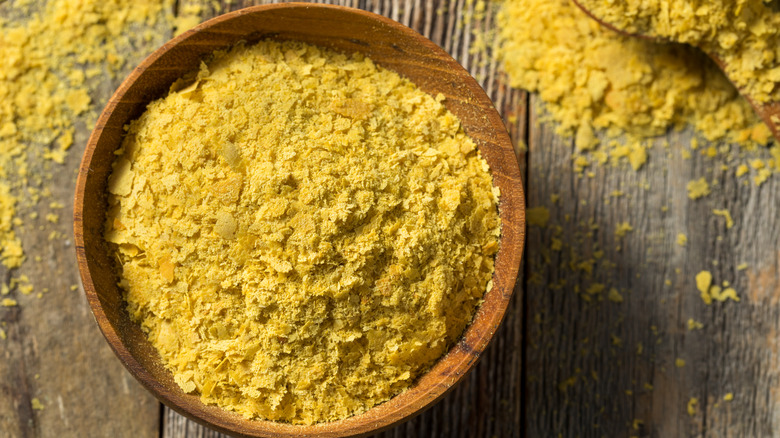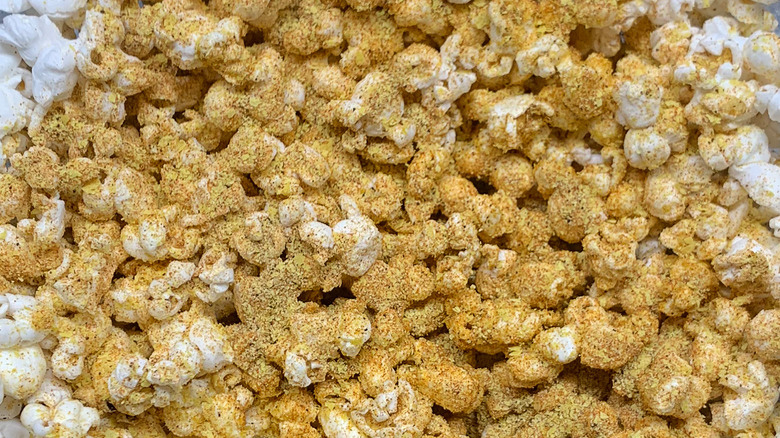Why You Should Always Have Nutritional Yeast In Your Pantry
Looking to add a punch of nutrition and a burst of flavor to your meals? Look no further than nutritional yeast. This lesser-known yet extraordinary ingredient has been gaining recognition as a game-changer. In the world of healthy and delicious cooking, this versatile ingredient is notable for its unique taste and impressive health benefits. But for those who are unfamiliar with nutritional yeast, it is worth discovering why it deserves a spot in your pantry.
Nutritional yeast — a deactivated yeast with a cheesy, nutty flavor — is not only a favorite among vegans and vegetarians but also a versatile addition to any diet. Packed with essential vitamins, minerals, and protein, this golden gem offers a myriad of health benefits while elevating the taste of a wide range of dishes. Whether you're seeking a boost of B vitamins or a savory twist to your recipes, nutritional yeast is here to revolutionize your culinary adventures. Get ready to explore the wonders of nutritional yeast and unlock a whole new world of flavor.
What is nutritional yeast?
Nutritional yeast is an inactive yeast, scientifically known as Saccharomyces cerevisiae, that is grown specifically for its nutritional properties. It is often sold in the form of yellow flakes or powder. One of the most notable advantages of nutritional yeast is its high vitamin B12 content. While the unusual seasoning also adds flavor, this nutrient-rich quality makes it attractive to many vegans and vegetarians whose diets typically lack plant-based sources of vitamin B12.
It also offers a savory and cheesy taste, often compared to parmesan cheese, making it a popular choice for adding flavor to a variety of dishes. Simply sprinkle them on top or mix the flakes into a dish as you cook. But there is so much more to nutritional yeast than simply its vitamin B12 concentration and cheesy flavor.
Types of nutritional yeast
Nutritional yeast comes in two primary forms: fortified and unfortified. Fortified nutritional yeast is enriched with additional vitamins, such as B vitamins, including B12, which are commonly lacking in plant-based diets. B12 is primarily found in animal-derived foods. Therefore, fortified nutritional yeast provides an easy and convenient way to meet your daily B12 requirements without relying on animal sources.
On the other hand, unfortified nutritional yeast contains only the naturally occurring vitamins and minerals found in the yeast itself. It doesn't undergo any additional fortification processes. While unfortified nutritional yeast may lack the added B vitamins, it still offers a wealth of other nutrients and a delightful flavor profile.
Choosing between fortified and unfortified nutritional yeast depends on your specific dietary needs and preferences, making it important to read labels and select the type that aligns with your goals. Ultimately, it comes down to whether or not you need or want to incorporate more B12 into your diet.
What does nutritional yeast taste like?
Nutritional yeast is known for its unique and distinctive taste. Its flavor profile adds depth and richness to a variety of recipes and dishes. It has a savory, cheesy, and nutty taste that is often described as umami. You could compare its flavor to that of parmesan cheese or a lightly toasted nut. The umami quality of nutritional yeast lends a savory and satisfying note to meals, making it a popular choice for those seeking to enhance the taste of their recipes.
Whether sprinkled on popcorn, mixed into sauces, or added to soups, nutritional yeast brings a deliciously robust and flavorful element to the table. Its versatility allows it to mimic the umami characteristics typically associated with dairy-based products, making it a go-to ingredient for vegan and dairy-free alternatives. So, if you're looking to add a touch of savory and cheesy goodness to your dishes, nutritional yeast is your culinary ally.
How is nutritional yeast made?
The production of nutritional yeast involves a carefully controlled process to harness its nutritional benefits. It begins by cultivating the yeast species Saccharomyces cerevisiae in a controlled environment. The yeast is then fed a nutrient-rich medium, often consisting of sugar cane or beet molasses combined with water. As the yeast consumes these nutrients, it undergoes fermentation, multiplying and producing various compounds.
Once the yeast has reached its peak, it is harvested and washed to remove any impurities. Next, it undergoes a drying process, typically through gentle heat or air-drying methods. This deactivates the yeast, preserving its nutritional content while rendering it safe for consumption. Finally, the dried yeast is typically milled into flakes or ground into a fine powder, resulting in the recognizable form of nutritional yeast that we find in stores. This meticulous process ensures that nutritional yeast retains its nutritional value and unique flavor, ready to enhance foods and supplement diets.
Nutritional information of nutritional yeast
Nutritional yeast is a nutritional powerhouse. It offers an array of health benefits that make it a valuable addition to a balanced diet. It is low in calories, fat, and sodium while being rich in protein, fiber, and essential vitamins and minerals. Just two tablespoons of nutritional yeast provide around 50 calories, 8 grams of protein, and a significant amount of B vitamins. Nutritional yeast contains complete protein because it houses all nine essential amino acids necessary for optimal bodily function and muscle growth.
Additionally, it is rich in B vitamins, including vitamin B12 which it is so well known for. Nutritional yeast is also packed with fiber, promoting digestive health and aiding in weight management. Moreover, it contains essential minerals — like zinc, selenium, and iron — supporting immune function, antioxidant activity, and oxygen transport in the body. With it being low in sodium and fat content as well as gluten-free (per WebMD), nutritional yeast makes for a healthy addition to a variety of dishes, elevating both their taste and nutritional value.
How is nutritional yeast different?
While nutritional yeast, baker's yeast, and brewer's yeast all belong to the same species, Saccharomyces cerevisiae, they differ in terms of their purpose and characteristics.
Nutritional yeast is specifically grown for its nutritional properties — offering a rich source of vitamins, protein, and minerals — and is deactivated. While all three yeasts offer health benefits, nutritional yeast stands out for its unique flavor profile and enhanced nutritional content, which is sometimes fortified.
On the other hand, baker's yeast is active and primarily used as a leavening agent in baking. It ferments sugars, releasing carbon dioxide, which causes the dough to rise.
Brewer's yeast is a byproduct of beer-making and is often inactive. It contains a range of nutrients and is commonly used as a dietary supplement in small quantities. It is common to find brewer's yeast added to dishes that are sometimes served in brewpubs, tap rooms outfitted with a restaurant, and other brewery-adjacent eateries.
What to know before adding it to your diet
Before incorporating nutritional yeast into your diet, it's important to consider a few factors and exercise caution.
It is always best to consult a doctor before making drastic changes to your diet or increasing any dietary supplements you might take. You want to be certain that these changes are compatible with any medications and supplements that you are currently taking as well as any medical conditions that you have.
Additionally, some might have a yeast allergy or sensitivity and could experience adverse reactions (per Journal of Investigational Allergology and Clinical Immunology). People with inflammatory bowel disease might also experience an immune reaction to it (per UMass Chan Medical School).
Due to its high fiber content, some people may also experience gastrointestinal discomfort when consuming large amounts of nutritional yeast. It's recommended to start with small quantities and gradually increase your intake to a moderate amount — around a few tablespoons, according to Healthline.
Finally, while nutritional yeast offers numerous health benefits, it should be consumed as part of a balanced diet and not relied upon as a sole source of nutrition or any one key vitamin or mineral.
By considering these factors, you can make informed decisions about incorporating nutritional yeast into your dietary routine.
Where to buy nutritional yeast
Nutritional yeast has gained popularity and is now widely available in various stores and online retailers. When looking to purchase nutritional yeast, you can explore several retail options. Health food stores, both local and chain, often carry nutritional yeast in their bulk bins or in containers located on the spice aisles. Natural food sections in regular grocery stores may also stock nutritional yeast.
Online marketplaces provide a convenient way to purchase nutritional yeast from the comfort of your home, with numerous trusted retailers offering a wide range of brands and varieties. Additionally, specialty vegan or plant-based stores or websites may have a dedicated selection of nutritional yeast products.
When purchasing nutritional yeast, it's advisable to opt for reputable brands that ensure quality and freshness. Don't hesitate to read reviews, compare prices, and consider any specific dietary requirements or preferences, such as fortified or unfortified, before making your purchase. With the growing popularity of nutritional yeast, finding this remarkable ingredient for your culinary adventures has become easier than ever.
Cooking with nutritional yeast
The possibilities are endless when it comes to cooking with nutritional yeast. One of the most popular ways to use nutritional yeast is as a topping for popcorn, giving it a savory, cheesy taste. It can be sprinkled on roasted vegetables or mixed into mashed potatoes for an extra layer of savory goodness. Nutritional yeast is also a fantastic addition to soups, stews, and chili, providing a depth of flavor.
It can also be incorporated into sauces, such as vegan cheese sauces or creamy pasta sauces, adding a rich and cheesy flavor. Nutritional yeast works well in vegan cheese alternatives, like cashew-based or tofu-based spreads, giving them a cheesy profile. Vegans and vegetarians often use it in recipes for plant-based "cheesy" dishes like macaroni and cheese, grilled cheese, or vegan nachos.
With its versatile flavor profile, nutritional yeast can be used creatively in a wide array of dishes, making them more delicious and nutritious. So, experiment and find your own favorite uses for the special ingredient.
How to store nutritional yeast
To maximize the shelf life and maintain the quality of nutritional yeast, proper storage is key. The best method is to store it in an airtight container in a cool, dry place away from light. Exposure to moisture can cause clumping and spoilage. A pantry or cupboard is an ideal spot.
Refrigeration is not necessary but can extend the shelf life, especially in hot and humid climates. If refrigerated, ensure the container is tightly sealed to prevent moisture absorption. Avoid transferring nutritional yeast to a container that has been previously used for other strong-smelling ingredients, as it can absorb odors.
When properly stored, nutritional yeast can retain its flavor and nutritional properties for up to a year or two. Regularly check for any signs of spoilage, such as off odors or discoloration, and discard if it appears compromised.
